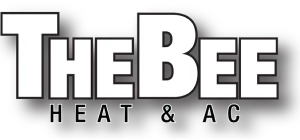Welcome to an in-depth exploration of a topic that has been gaining significant attention in the HVAC industry – heat pumps and their connection to the Inflation Reduction Act. As we navigate through this comprehensive guide, our objective is to illuminate the intricacies of these concepts and their implications for homeowners, industry professionals, and the broader HVAC landscape.
On This Article
hide
1)
Understanding Heat Pumps
2)
The Inflation Reduction Act and Its Implications
3)
Tax Deductions and Electric Upgrades
4)
The Electrify for Peace Policy Plan
5)
Rebate System Based on Household Income
6)
The Decision to Invest in a Heat Pump
7)
Conclusion
8)
FAQs
8.1)
What is a heat pump and how does it work?
8.2)
What is the Inflation Reduction Act and how does it relate to heat pumps?
8.3)
How does the tax deduction for electric upgrades work under the Inflation Reduction Act?
8.4)
What is the Electrify for Peace policy plan?
8.5)
What should I consider when deciding to invest in a heat pump?
Understanding Heat Pumps
Before we delve into the specifics of the Inflation Reduction Act, let’s first demystify what a heat pump is. Heat pumps are not a novel technology; they have been around for quite some time. However, they have recently come to the forefront due to the ongoing decarbonization movement, which aims to reduce carbon emissions and foster a more sustainable future.
At its core, a heat pump is akin to an air conditioner. However, it incorporates a crucial component known as a reversing valve. This valve alters the flow of refrigerant, enabling the heat pump to transfer heat from the outside environment into the home. This feature allows the heat pump to provide heating during colder months, making it a versatile solution for year-round indoor comfort.
The operation of a heat pump might seem perplexing, especially when considering how it can extract heat from the outdoor air when the temperature is as low as 10 degrees. This phenomenon can be explained by the concept of absolute zero. This is a point on the Kelvin scale, separate from Fahrenheit and Celsius, where particle motion ceases due to extreme cold. However, it’s important to note that reaching absolute zero is more theoretical than practical.
The Inflation Reduction Act and Its Implications
Now that we have a fundamental understanding of heat pumps, let’s shift our focus to the Inflation Reduction Act and its implications for heat pump users. The Act is a comprehensive piece of legislation, but for the purpose of our discussion, we will focus on the High Efficiency Electric Home Rebate Act, which is a part of the larger Inflation Reduction Act.
The High Efficiency Electric Home Rebate Act allocates a substantial $4.5 billion in direct rebates for low and moderate-income households that install new, efficient electric appliances. This is part of a broader initiative to encourage energy efficiency and reduce carbon emissions in residential settings.
For instance, a low-income household could receive a rebate covering the full cost of a heat pump installation for space heating, capped at eight thousand dollars. This is a significant incentive that can make the adoption of this energy-efficient technology more accessible to a broader demographic. The Act also provides additional rebates for other appliances, such as heat pump water heaters and electric stoves, further promoting the shift towards energy-efficient appliances.
Tax Deductions and Electric Upgrades
Another critical component of the Inflation Reduction Act is the provision for tax deductions for electric upgrades. Homeowners can deduct up to 30 percent of the cost of home upgrades from their taxes. These deductions are limited to six hundred dollars per measure, with a maximum limit of twelve hundred dollars per household. However, there is an exception for households that install a heat pump water heater or a heat pump for space heating. These households can deduct 30 percent of the cost of buying and installing these appliances, up to two thousand dollars.
This provision provides a financial incentive for homeowners to upgrade their homes with energy-efficient appliances, contributing to the broader goal of energy conservation and carbon reduction.
The Electrify for Peace Policy Plan
The Inflation Reduction Act also includes a provision to bolster the Defense Production Act with the Electrify for Peace policy plan. This initiative aims to help Europe reduce its reliance on Russian oil and gas in the medium term. While this is a noble goal, it’s worth noting that increasing the electrical demand on the grid may not be the most effective solution to this issue. This highlights the complexity of energy policy and the need for balanced solutions that consider both environmental and practical implications.
Rebate System Based on Household Income
The Act also provides a tiered rebate system based on household income. Households with income eighty percent below the area’s median income will receive the maximum rebate, covering up to 100 percent of a new heat pump’s value, capped at eight thousand dollars. This is a significant incentive that can make the adoption of this energy-efficient technology more accessible to a broader demographic.
Households with income from 80 to 150 percent of the median will receive up to fifty percent of the heat pump’s cost. Even households with income exceeding 150 percent of the area’s median are eligible for a 30 percent tax credit, up to two thousand dollars, on new heat pumps. This tiered system ensures that the benefits of the Act are distributed across different income levels, promoting widespread adoption of energy-efficient technologies.
The Decision to Invest in a Heat Pump
While these incentives are significant, they should not be the sole reason for purchasing a heat pump. Heat pumps, particularly high-end models like those in the VRV life and Daikin fit range, offer increased comfort and efficiency, making them a worthwhile investment.
However, it’s important to consider the overall cost of owning and operating a heat pump. While the government may cover the cost of a heat pump through a tax credit, heat pumps, especially base model ones, can be more expensive to run compared to an eighty percent efficient furnace due to their higher power consumption. Therefore, it may be beneficial to budget for a higher efficiency heat pump and plan on spending over $8,000.
Conclusion
Understanding heat pumps and the Inflation Reduction Act can help homeowners make informed decisions about their heating systems. While the government incentives are attractive, it’s crucial to consider the long-term costs and benefits of owning a heat pump.
Thank you for joining us on this exploration of heat pumps and the Inflation Reduction Act. We hope you found this guide informative and helpful. Stay tuned for more insightful discussions on HVAC topics.
FAQs
What is a heat pump and how does it work?
A heat pump is a device that transfers heat from one place to another. It works similarly to an air conditioner, but with an added feature: a reversing valve that changes the flow of refrigerant. This allows the heat pump to transfer heat from the outside environment into the home, providing heating during colder months.
What is the Inflation Reduction Act and how does it relate to heat pumps?
The Inflation Reduction Act is a piece of legislation that includes the High Efficiency Electric Home Rebate Act. This Act provides direct rebates for low and moderate-income households that install new, efficient electric appliances, including heat pumps. It aims to encourage energy efficiency and reduce carbon emissions in residential settings.
How does the tax deduction for electric upgrades work under the Inflation Reduction Act?
Under the Inflation Reduction Act, homeowners can deduct up to 30 percent of the cost of home upgrades from their taxes. These deductions are limited to six hundred dollars per measure, up to twelve hundred dollars per household. However, households can deduct 30 percent of the cost of buying and installing a heat pump water heater or heat pump for space heating, up to two thousand dollars.
What is the Electrify for Peace policy plan?
The Electrify for Peace policy plan is a provision in the Inflation Reduction Act that aims to bolster the Defense Production Act. The goal of this initiative is to help Europe reduce its reliance on Russian oil and gas in the medium term.
What should I consider when deciding to invest in a heat pump?
While the government incentives provided by the Inflation Reduction Act are significant, they should not be the sole reason for purchasing a heat pump. It’s important to consider the overall cost of owning and operating a heat pump. Heat pumps, especially base model ones, can be more expensive to run compared to an eighty percent efficient furnace due to their higher power consumption. Therefore, it may be beneficial to budget for a higher efficiency heat pump and plan on spending over $8,000.

